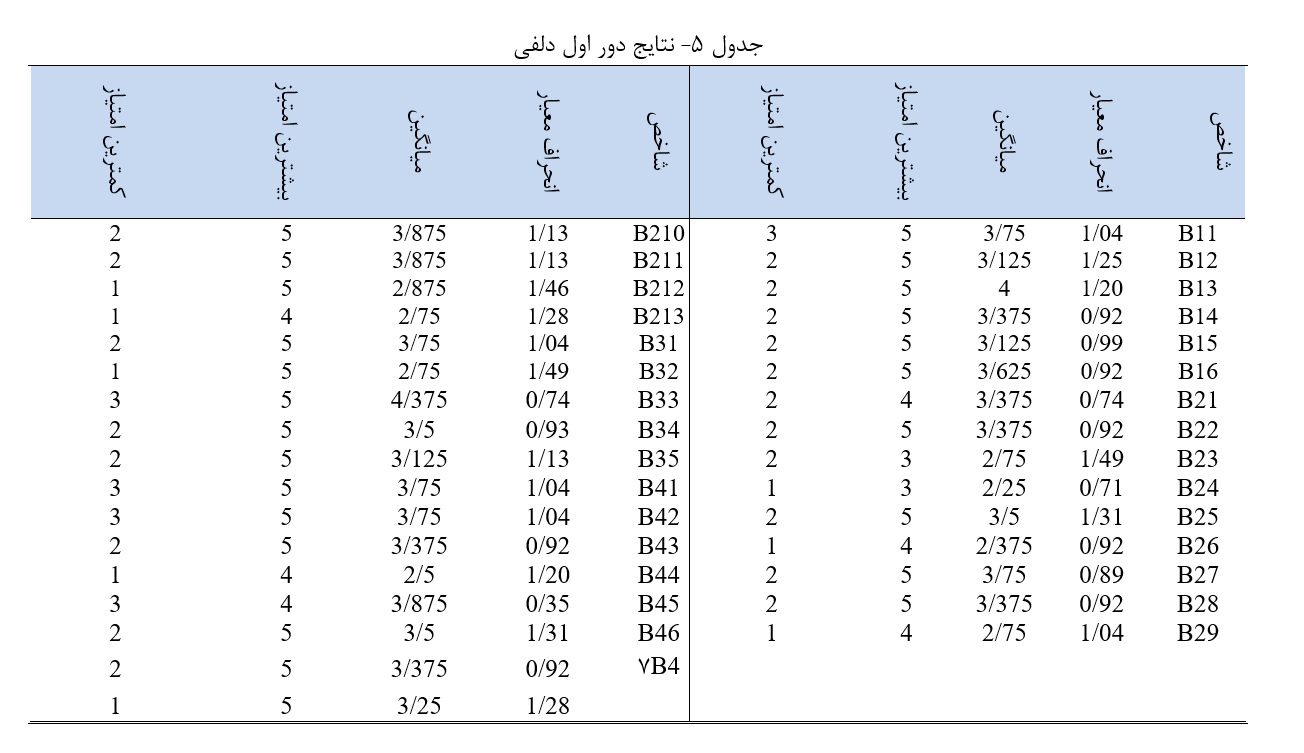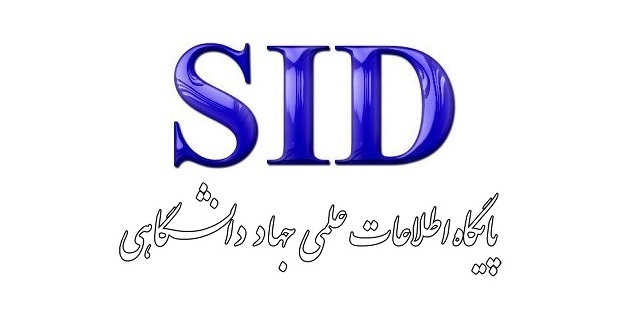Advancing Sustainability in Food Supply Chains: Barriers to Implementing the Product-as-a-Service Model with an Emphasis on the Role of Technology
Keywords:
Product-as-a-service (PaaS), circular economy, food industry, barriers, digital technologies, Internet of Things (IoT), blockchain, Z-numbers, Best-Worst Method (BWM)Abstract
The Product-as-a-Service (PaaS) model, as an innovative solution in food supply chains, allows businesses to utilize technology-based services such as Internet of Things (IoT) and blockchain instead of purchasing and owning equipment. However, the implementation of this model in developing countries faces numerous challenges. This study investigates the key barriers to implementing PaaS in food supply chains in these countries and categorizes them into four main groups: financial, technical, regulatory, and socio-cultural barriers. The results reveal that lack of digital infrastructure, high technology implementation costs, and lack of supportive government policies are among the fundamental barriers to the adoption of this model. Additionally, cultural preference for asset ownership and distrust of foreign companies are identified as major socio-cultural barriers that hinder the acceptance of PaaS by local communities. To overcome these obstacles, the study proposes solutions such as developing digital infrastructure, providing financial assistance and government subsidies, raising community awareness through educational programs, and involving local stakeholders in decision-making processes. This research demonstrates that the PaaS model can enhance the efficiency of food supply chains in Iran, contributing to reduced food waste, increased sustainability, and lower operational costs.
References
Abdel-Salam, O., & El-Gayar, A. (2020). Financial access barriers for SMEs and farmers adopting PaaS models. Journal of Business Economics, 23(5), 203–220. https://doi.org/10.xxxx/jbe.2020.235203
Aboutorab, H., Saberi, M., Rajabi Asadabadi, M., Hussain, O., & Chang, E. (2018). ZBWM: The Z-number extension of Best Worst Method and its application for supplier development. Expert Systems With Applications, 107, 115–125. https://doi.org/10.1016/j.eswa.2018.04.015
Ali, M., & Khan, R. (2019). Legal uncertainties and regulatory challenges in PaaS implementation. Regulatory Policy Review, 7(3), 112–125. https://doi.org/10.xxxx/rpr.2019.073112
Aliakbari, S., Vafaei, F., & Namamiyan, F. (2022). Identifying barriers to the application of the Internet of Things in small and medium-sized enterprises of Ilam Province using fuzzy Delphi technique. Farhang-e Ilam, 76, 97–116. https://doi.org/10.22034/FARHANG.2023.169586
Baines, T., & Lightfoot, H. (2013). Servitization of the manufacturing firm: Exploring the operations practices and technologies that deliver advanced services. International Journal of Operations & Production Management, 33(11–12), 1408–1434. https://doi.org/10.1108/IJOPM-07-2010-0196
Bocken, N. M. P., de Pauw, I., Bakker, C., & van der Grinten, B. (2019). Product design and business model strategies for a circular economy. Journal of Industrial and Production Engineering, 33(5), 308–320. https://doi.org/10.1080/21681015.2016.1172124
Bocken, N., & Shirahada, K. (2024). Circular business models in Japan: Analysis of circular business transformation through an institutional approach. Sustainable Production and Consumption, 54, 389–403. https://doi.org/10.1016/j.spc.2025.01.015
Carson, M., & Agyeman-Budu, E. (2020). Blockchain-enabled food traceability in Ghana: The case of smallholder cocoa farmers. Journal of Sustainable Development in Africa, 22(1), 124–137.
Chen, Y., Wang, Y., & Liu, Y. (2021). Applications of AI in food industry: A review. Journal of Food Engineering, 302, 110740. https://doi.org/10.1016/j.jfoodeng.2021.110740
Habibi, A., Sarafrazi, A., & Izadyar, S. (2014). Delphi technique theoretical framework in qualitative research. The International Journal of Engineering and Science, 3(4), 8–13.
Haji, L., & Valizadeh, N. (2024). Behavioral drivers of reducing food waste among rural households: Application of environmental psychology. Quarterly Journal of Environmental Sciences, 22(1), 165–182. https://doi.org/10.48308/envs.2024.1338
Haseli, G., Sheikh, R., Ghoushchi, S. J., Hajiaghaei-Keshteli, M., Moslem, S., Deveci, M., & Kadry, S. (2024). An extension of the best–worst method based on the spherical fuzzy sets for multi-criteria decision-making. Granular Computing, 9(40). https://doi.org/10.1007/s41066-024-00462-w
Henriques, R., Figueiredo, F., & Nunes, J. (2023). Product-services for a resource-efficient and circular economy: An updated review. Sustainability, 15(15), 12077. https://doi.org/10.3390/su151512077
Kamath, R. (2018). Food traceability on blockchain: Walmart’s pork and mango pilots with IBM. The Journal of the British Blockchain Association, 1(1), 3712. https://doi.org/10.31585/jbba-1-1-(10)2018
Kanda, W., Sakao, T., & Hjelm, O. (2021). Business models for circular economy: Using perspectives of sustainability to support service-based innovations. Sustainability, 13(5), 2746. https://doi.org/10.3390/su13052746
Kumar, R., Singh, R. K., & Gupta, M. (2020). Evaluating the barriers of sustainable supply chain management: A case study. Benchmarking: An International Journal, 27(1), 202–232. https://doi.org/10.1108/BIJ-06-2019-0241
Maijamaa, B., Adehi, M. U., Modu, B., & Umar, M. I. (2023). Technology-driven social innovation in the emerging market. In Q. T. Islam, R. Goel, & T. Singh (Eds.), Fostering sustainable businesses in emerging economies (pp. 1–21). Emerald Publishing Limited. https://doi.org/10.1108/978-1-80455-640-520231001
Mashreq News. (2024, October 17). Strange statistics on food waste in Iran. https://www.mashreghnews.ir/news/1642263/
Mirfalah Demochali, R., Ebrahimipour, M., Ramezanian, M. R., & Moradi, M. (2024). Identifying factors affecting product design in the circular economy and analyzing their relationships using thematic analysis and interpretive structural modeling (ISM). Journal of Technology Development Management. https://doi.org/10.22034/jtd.2024.2035745.1948
Mohammadian, A., Vares, S. H., & Nabizade, N. (2022). Circular business model canvas: Proposing business model design options in a circular economy. Iranian Journal of Management Sciences, 17(65), 123–147. https://doi.org/10.22054/IMS.2023.69558.2218
Mont, O., Dalhammar, C., & Jacobsson, N. (2020). A new business model for sustainable consumption: A case study of product-service systems in Sweden. Journal of Cleaner Production, 10(3), 237–245. https://doi.org/10.1016/S0959-6526(01)00058-3
Mukherjee, I., & Sovacool, B. K. (2021). Access to affordable, reliable, sustainable, and modern energy: Progress and challenges in developing countries. Renewable and Sustainable Energy Reviews, 135, 110118. https://doi.org/10.1016/j.rser.2020.110118
Oghazi, P., & Mostaghel, R. (2018). Circular business model challenges and lessons learned. Technological Forecasting and Social Change, 135, 216–225. https://doi.org/10.1016/j.techfore.2018.01.009
Patel, S., & Sharma, A. (2022). Overcoming cultural resistance through education: PaaS in local communities. Journal of Business and Cultural Studies, 14(6), 159–172. https://doi.org/10.xxxx/jbcs.2022.146159
Reike, D., Vermeulen, W. J., & Witjes, S. (2018). The circular economy: New or refurbished as CE 3.0? Exploring controversies in the conceptualization of the circular economy through a focus on history and resource value retention options. Resources, Conservation and Recycling, 135, 246–264. https://doi.org/10.1016/j.resconrec.2017.08.027
Saeidi, M., Ebrahimpour Azbari, M., & Ramazaniyan, M. R. (2023). Model for improving sustainable performance of small and medium-sized enterprises in the food industry of Gilan Province. Journal of Industrial Management Studies, 7, 48–78. https://doi.org/10.22054/jims.2023.67258.2779
Sajjadian, S. M. (2023). Product-service systems (PSS): A bibliometric analysis and scientific production network structure. Journal of Intelligent Business Management Studies, 11(43), 131–185. https://doi.org/10.22054/IMS.2023.69558.2218
Sengupta, S., Choudhary, S., Obayi, R., & Nayak, R. (2024). Reducing food loss through sustainable business models and agricultural innovation systems. Supply Chain Management: An International Journal, 29(3), 540–572. https://doi.org/10.1108/SCM-01-2023-0059
Supreetha, S., Sonarthi, H., & Mall, S. (2023). Food processing and management of food supply chain: From farm to fork. In J. A. Malik, M. R. Goyal, & A. Kumari (Eds.), Food process engineering and technology (pp. 1–25). Springer. https://doi.org/10.1007/978-981-99-6831-2_6
Vares, S. H., Hajiheidari, N., Kargar Shouraki, M., & Mehrjoo, S. (2025). Presenting a transition framework for a sustainable innovative circular business model. Business Management. https://doi.org/10.22059/JIBM.2024.381695.4837
Vetrova, M. A., & Ivanova, D. V. (2025). Product as a service business model in the context of the development of a digital circular economy: The transition to a circular economy. In Multidisciplinary analysis of digital transformation and global market dynamics (pp. 1–18). IGT Global Scientific Publishing. https://doi.org/10.4018/979-8-3693-3423-2.ch001
Wang, S., Ghadge, A., & Aktas, E. (2024). Digital transformation in food supply chains: An implementation framework. Supply Chain Management, 29(2), 328–350. https://doi.org/10.1108/SCM-09-2023-0463
Zadeh, L. A. (2011). A note on Z-numbers. Information Sciences, 181(14), 2923–2932. https://doi.org/10.1016/j.ins.2011.02.022
Zaki, M., & Yasin, S. (2021). The role of technology in addressing the challenges of food supply chains in developing countries. Technological Forecasting and Social Change, 167, 120719. https://doi.org/10.1016/j.techfore.2021.120719

Downloads
Published
Submitted
Revised
Accepted
Issue
Section
License
Copyright (c) 2025 مهسا پیشدار (نویسنده مسئول)

This work is licensed under a Creative Commons Attribution-NonCommercial 4.0 International License.






